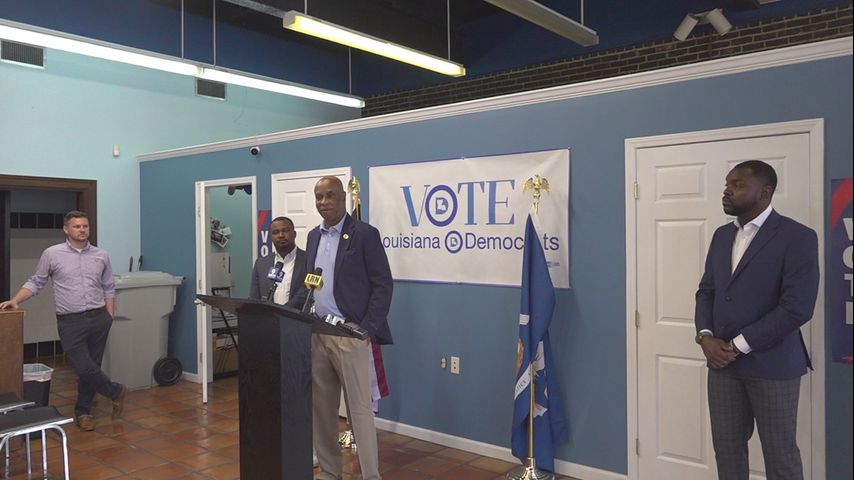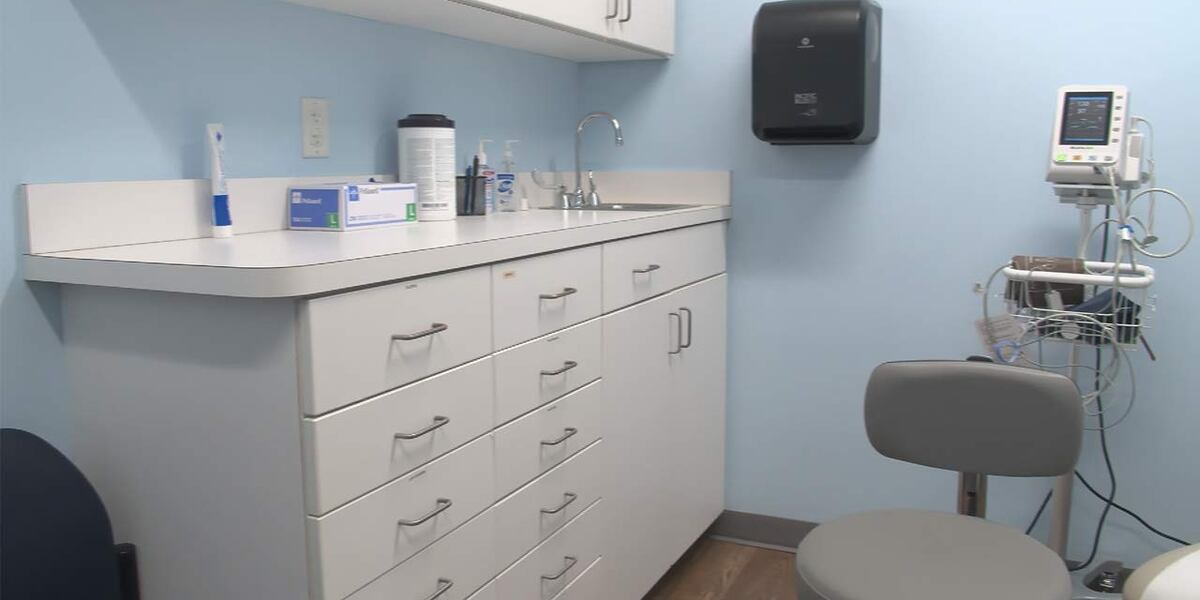Montana
Montana's Medicaid disenrollment is even a bigger catastrophe than previously reported – Daily Montanan

You wouldn’t believe how many different ways I tried to begin this column trying to find the perfect analogy or phrase to sum up just how badly the Gianforte administration has handled Medicaid in Montana.
Describing it as a dumpster fire, for example, would imply that a raging fire is contained in a small space. More importantly, it says nothing about the real Montanans who lives are upended by what is a political decision that has more to do with Republicans trying to out-Republican each other than it does with being earnestly concerned about fraud, the reason given for making Medicaid enrollment so severe in Montana.
Our ideologue governor has taken a system that was often cited as a model of how the Medicaid expansion could work and dismantled it, hurting Montanans who struggle, hospitals and healthcare professionals, and reneging on a financial set-up so sweet that it should make anyone with a little business acumen scratch their head.
Let’s begin with the basics: After the COVID-19 pandemic, everyone, including the federal government, knew that Medicaid rolls would need to be trimmed, and expected that many who were previously eligible would drop because they had either restarted employment or found a new job.
But Montana’s number of people dropped from the public insurance enrollment has literally been extraordinary. As it stands right now, 10% of the state’s entire population has been dropped – a sheer number that should raise eyebrows.
The Gianforte administration in its zeal to attack a successful government program that has meant better health for residents as well as more stability for our stretched rural-centered healthcare, has also thumbed their noses at a deal that costs the state just a fraction of what it could be spending. For every dime the state contributes toward Medicaid, Montana receives 90 cents from the federal government. Virtually no other state gets a deal quite this sweet, and if the Gianforte administration had half of the business acumen it touts, it would be doing everything it could to take advantage of this deal.
Who wouldn’t take a deal that guaranteed giving us nine times the money we invest?
Setting aside the most important point that seems to get lost in every Medicaid policy discussion: The effect of Medicaid expansion in Montana has meant that residents are living healthier lives because they have insurance, and Medicaid has also meant a financial lifeline to hospitals who were strapped with a growing number of uninsured and underinsured patients.
These rural healthcare facilities in Montana are often the economic backbones of smaller communities, often being the largest private employer in rural communities. What the Gianforte administration has done, with the legislature’s approval, is threaten the viability of rural healthcare in the state by booting residents off the Medicaid rolls, leaving those already strapped healthcare organizations to absorb the loss. The lawmakers decided that Montana should “redetermine” eligibility more quickly, meaning there’s more churn to Medicaid, meaning more instability for residents and the healthcare they rely upon. Look no farther than what has happened to our rural nursing homes to see the results of not funding healthcare adequately.
But don’t take my word for it, look at the statistics. Montana has been booting residents from the Medicaid roll at a clip that is around three times more than average nationally. What makes that fact even more troubling is the inconsistent, if not conflicting, reports lawmakers have gotten from the Department of Public Health and Human Services, whose answers have more closely resembled a choose-your-own-adventure book than transparency.
You may recall that as Montana started its Medicaid purge, the Biden administration placed the state on notice that it was booting residents so quickly while at the same time seeming to ignore that the state had created a situation that was nearly impossible for those same residents to talk to a live person to get help.
Keep in mind that Gianforte himself made close to a billion dollars by creating a technology company that served to create customer service call centers. So much, apparently, for running the state like a business. This should have been something that Gianforte could have solved himself.
As lawmakers from both parties expressed concern that Montana was booting too many residents too quickly off Medicaid, DPHHS director Charlie Brereton quipped that the state could actually speed up the process – a sort of veiled threat that lawmakers should step lightly.
Yet last week, when lawmakers continued to press for answers about why so many people were losing insurance, as well as other related matters, Brereton told legislators that his staff were so taxed, and spread so thin that they simply don’t have time to answer their questions – the same people who are charged with making policy decisions about this essential care.
So, I’ll ask: Which is it, Mr. Brereton? Is it that your staff could boot Montana residents even more quickly from health insurance that they need, or is it that you can’t even provide answers because your staff is so overworked?
An equally plausible answer is that the administration could start bumping off residents from Medicaid more quickly and won’t answer the lawmakers’ questions because the state is carrying out a political decision that has little to do with ensuring Montanans’ health, making a sound financial decision or worrying about the economic health or rural Montana.
Let me put it bluntly, though – in terms that would normally be hyperbole, but, in this case, are literal.
When people don’t have insurance, they suffer more and die sooner.
When rural healthcare facilities see a rise in uncompensated, uninsured patients, they close.
When lawmakers can’t get answers from their partners in government, public trust is eroded and government moves from function to dysfunction.
Maybe the Gianforte administration can help me: How is any of this an example of good government?

Montana
Montana Morning Headlines: Wednesday, October 29, 2025

WESTERN MONTANA — Here’s a look at Western Montana’s top news stories for Wednesday.
The University of Montana removed Business Professor Anthony Richard Pawlisz from faculty after he was charged with criminal endangerment in Ravalli County court. Pawlisz allegedly pulled a gun on a man and fired a shot into the air after a fight outside of a bar in Florence on Aug. 17, according to court documents. His former class will continue under Professor Udo Fluck. (Read the full story)
Nathaniel Luke Smith pleaded guilty to disorderly conduct on Monday after posing a threat to Mission High School on Oct. 8, which prompted increased police presence while classes continued. Smith is also serving a three-year deferred sentence for intimidation from an incident in November 2024. (Read the full story)
Montana Governor Greg Gianforte said he will not be using state funds to temporarily cover SNAP benefits for nearly 78,000 enrolled Montanans if federal funding runs out on Nov. 1. Amidst a government shutdown, he said it’s a federal responsibility — despite calls from Democrats and food banks to use leftover state money. (Read the full story)
Montana
Army Veteran and Fourth-Generation Montana Rancher Announces Run for Montana’s First Congressional District

Matt Rains recently announced his campaign for Montana’s First Congressional District seat. Rains, a Democrat, is a fourth-generation Montana rancher, U.S. Army Veteran, and former Chief of Staff for the Montana Farmers Union.
“I am running for Congress because Montanans deserve better,” said Rains. “Like my neighbors and friends, I see and feel the cost of everything going up in Montana – and Ryan Zinke is making it worse by voting to support the tariffs and cutting Medicaid to drive up our health care costs.
“When I see a problem, I run towards it to find a solution: when our country was at…
Montana
Thousands of pounds of pork bound for Montana food banks following feral swine investigation

After the state intervened to trap about 100 swine demonstrating feral behaviors, Montana food banks are slated to receive an influx of pork this week.
Late last month, Wildlife Services, a federal agency under the U.S. Department of Agriculture’s umbrella, tipped off the Montana Department of Livestock that it might have a feral swine population on its hands.
Wildlife Services, which intervenes when landowners report conflicts with wildlife, had been called to Phillips County in north-central Montana to investigate a potential bear conflict. The agency didn’t find evidence of bear activity, but it did find hoof prints, pig scat and other signs consistent with swine presence. The day after Wildlife Services visited the site near Malta along the Hi-Line, the state started looking into the matter and learned that approximately 100 pigs were running uncontained and “beginning to demonstrate behaviors and characteristics consistent with feral swine populations,” according to a press release.
The Montana Legislature passed a law in 2015 prohibiting the importation, transportation or possession of feral swine. Intentionally, knowingly or negligently allowing swine to live in a “feral state” is also illegal. By passing the law, policymakers sought to ward off issues states and provinces have reported with feral swine, which can damage crops and wetlands, prey on wildlife and spread a form of brucellosis that can be transmitted to humans.
Neighboring areas, most notably Alberta and Saskatchewan in Canada, have grappled with feral swine populations for years, and wildlife managers there and in the U.S. consider them to be an invasive species.
Montana State Veterinarian Tahnee Szymanski told Montana Free Press that feral swine can become established in three ways: they can migrate into Montana from an area with an established population, they can be introduced — illegally — by hunters eager to pursue them for sport, or they can develop when domestic animals are freed from the “normal checks and balances” associated with livestock production.
“Domestic swine, left to their own devices for a couple of generations, actually revert back to feral behavior very quickly,” Szymanski said. “This is a really good reminder that a potential feral swine population could crop up anywhere in the state.”
The state livestock department receives about six reports per year of potential feral swine sightings. All of them have turned out to be “owned domestic swine running at large,” according to an agency press release.
In this particular case, there were some unique circumstances related to a death in the family that owned the swine, Szymanski said.
“This situation just kind of got out of control,” she said. “It has been allowed to maybe fester a little bit longer than a traditional circumstance we would encounter.”
Syzmanski said trapping operations began earlier this month, and all parties involved are pleased the meat will be distributed at food banks around the state.
On Oct. 18, the first swine shipment arrived at Producer Partnership, a nonprofit animal processing facility that works with agricultural producers to turn donated livestock into food for schools and other nonprofits. Trapping operations are ongoing with another 30-45 animals yet to be collected, Szymanski told MTFP on Oct. 22.
Producer Partnership is the country’s only nonprofit meat processing facility inspected by the U.S. Department of Agriculture. A product of the COVID-19 pandemic, Producer Partnership is located between Big Timber and Livingston and employs about 10 people.
Producer Partnership president and founder Matt Pierson estimates that the Montana Food Bank Network will receive between 8,000 and 14,000 pounds of pork from the swine. He said he’s unaware of any other organizations set up to take on these kinds of “oddball projects.”
“Our hope through this partnership is that people realize there’s a more amicable, better way to solve these issues without just going in and shooting everything,” he said. “It helps solve a problem for the state, and it helps put all that meat into the food bank.”
LATEST STORIES
Thousands of pounds of pork bound for Montana food banks following feral swine investigation
In late September, Wildlife Services alerted the Montana Department of Livestock to a potential feral swine issue involving about 100 animals in Phillips County, and the state began trapping the animals and delivered them to a nonprofit meat-processing facility shortly thereafter. The animals are now expected to provide a bounty of pork for food banks around the state. Matt Pierson, president and founder of Producer Partnership, said the arrangement will allow for a “better resolution” for all involved.
New law requires election officials to reject mail ballots that aren’t signed with voters’ birth years
Montana voters are having their first encounter with a new requirement to provide their birth year on the back of mail-in ballot envelopes alongside the previously required signature line. The change is a result of a legislative mandate aimed at enhancing mail election security. Election officials in Montana’s two largest counties, Yellowstone and Missoula, said the change had already forced them to reject hundreds of ballots in early returns.
Born from tragedy, Great Falls nonprofit Toby’s House provides free child care for families in need
Cascade County child care centers meet just 71% of the area demand, and a 2021 study described a “severe shortage” of child care capacity in Great Falls with an estimated 580 children in need of child care that wasn’t available. In that landscape, Toby’s House offers free, drop-in care that specializes in crisis intervention.
-

 New York6 days ago
New York6 days agoVideo: How Mamdani Has Evolved in the Mayoral Race
-

 World1 week ago
World1 week agoIsrael continues deadly Gaza truce breaches as US seeks to strengthen deal
-

 News1 week ago
News1 week agoVideo: Federal Agents Detain Man During New York City Raid
-

 News1 week ago
News1 week agoBooks about race and gender to be returned to school libraries on some military bases
-

 Technology1 week ago
Technology1 week agoAI girlfriend apps leak millions of private chats
-

 Politics1 week ago
Politics1 week agoTrump admin on pace to shatter deportation record by end of first year: ‘Just the beginning’
-

 News1 week ago
News1 week agoTrump news at a glance: president can send national guard to Portland, for now
-

 Business1 week ago
Business1 week agoUnionized baristas want Olympics to drop Starbucks as its ‘official coffee partner’



















